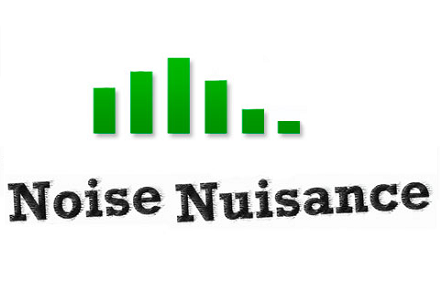Statistics from the Ministry of Justice have recently been obtained relating to statutory nuisance prosecutions. Some of the figures stand out, particularly in relation to the use of s.82 of the Environmental Protection Act 1990. (Section 82 provides for persons aggrieved by a nuisance to apply for a noise abatement order directly to a magistrate’s court). (By NoiseNuisance.org)
 |
| [relatedPosts title=”Related Posts”] |
|
|
Over the period from 2000-2010 the number proceeded against by the local authority for contravening an abatement notice under s.80 of the Environmental Protection Act 1990 remained fairly constant at around 800 per annum. In those cases the conviction rate (i.e. those found guilty) was consistently around the 75% mark.
Unlike s.80 (local authority action) the number proceeded against for contravention of an order made under s.82 (persons aggrieved) has fallen steadily over the last decade. In 2000 nearly 600 were proceeded against in the courts. By the year 2010 this figure had dropped below 100. In addition, the conviction rates for offences under s.82 were considerably lower than for s.80; being consistently under 20% (and reaching as low as 4%).
The chance of success with s.82 might therefore be seen the most obvious explanation for why its use has declined over the years since its introduction. However, the provision’s apparent lack of attraction to aggrieved persons might also be influenced by a number of other contributing factors, including:
- The person aggrieved not being familiar with the process of following strict legal procedures (such as the service of documents).
- The person aggrieved not being comfortable representing themselves in court they may find the costs of instructing a solicitor are prohibitive.
- The prospect of being held liable for the costs (which may be considerable) of the other party and well as their own.
- Proceedings are criminal, requiring the higher standard of proof (as opposed to procedures relating to abatement notices which are civil).
The local authority draws benefits from an understanding of statutory nuisance law and legal procedures whereas, a lack of such knowledge, can easily lead to failure on relatively simple matters. The investigating officer may also have considerable technical knowledge and access to specialist equipment or acoustic expertise. Furthermore, in most courts, the opinion of a qualified and experienced local authority environmental health officer is valued and he may be recognised as an expert in his own right.
A comparison of Ministry of Justice statistics to figures gathered by the CIEH confirm that the vast majority of statutory nuisance proceedings relate to noise. Throughout the 1990’s Section 82, was most commonly applied to housing matters; principally by persons aggrieved seeking improvement to living conditions. Case law now prevents such an application in relation to matters presenting themselves purely as physical hazards (providing further explanation for the reduction in s.82 over the previous decade). However, s.82 may be applied in a range of other circumstances and so the number of s.82 convictions in relation to noise nuisances is likely to significantly lower than the 36 registered in England & Wales in 2010.
CIEH statistics show that hundreds of thousands of noise nuisance issues are subject to local authority interventions; with most cases being settled informally by officers before resorting to legal proceedings. This fact, coupled with the uptake and enforcement success rate, may help confirm the effectiveness of s.80 as a noise control provision. Conversely, the opposite is clearly demonstrated in relation to s.82.
The statutory duties placed on local authorities (to investigate complaints and to serve notices) may be fundamental to the effectiveness of s.80. The suggestion that private practitioners are able to provide more effective investigation and abatement services to aggrieved parties is exaggerated. They would be subject to some of the same barriers presented by private action by individuals and provide additional costs. If anything can be taken from these latest statistics it is that it is even more important now that the statutory duties placed on local authorities (requiring them to investigate complaints and serve notices) are maintained and that noise investigation services are funded adequately. By doing so those affected by noise may be assured that access to justice will be maintained for all.
.





